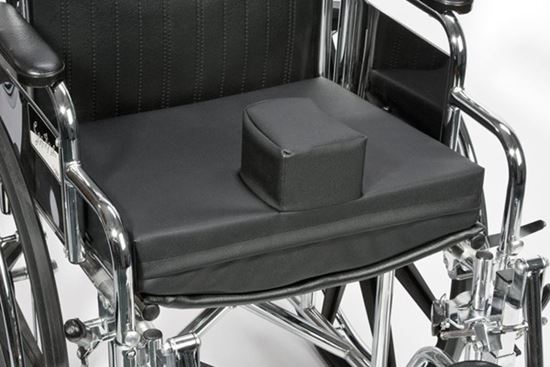-
Home
-
The Importance of Pommel Cushions for Wheelchairs
The Importance of Pommel Cushions for Wheelchairs
March 28, 2024
 When it comes to wheelchair seating, ensuring the comfort and safety of patients is essential. One key component that plays a significant role in promoting proper positioning and preventing patients from sliding is a pommel cushion. In this article, we will explore the benefits of pommel cushions, address common questions about their use, and discuss the different types of wheelchair cushions available on the market.
When it comes to wheelchair seating, ensuring the comfort and safety of patients is essential. One key component that plays a significant role in promoting proper positioning and preventing patients from sliding is a pommel cushion. In this article, we will explore the benefits of pommel cushions, address common questions about their use, and discuss the different types of wheelchair cushions available on the market.
What Does a Pommel Cushion Do?
A pommel cushion is designed to promote proper positioning by preventing patients from sliding forward in their wheelchair seats. It features a raised center section, or “pommel,” that helps keep the patient's legs separated and supported, reducing the risk of pressure ulcers and promoting overall comfort. Some cushions have a removable pommel for easier transfers in and out of the wheelchair.
Pommel cushions are designed to maintain proper hip and leg alignment, reduce the risk of adduction (inward movement of the legs), and prevent the user from sliding forward in the seat. These cushions also provide a number of additional benefits, including pressure relief, improved posture, increased stability, and better circulation.
- Pressure Relief: By distributing the user's weight evenly, pommel cushions reduce pressure on the ischial tuberosities (sit bones) and the coccyx (tailbone), minimizing the risk of pressure sores.
- Improved Posture: The pommel helps to maintain a stable and upright posture, which is essential for both comfort and respiratory function.
- Increased Stability: The separation of the thighs provided by the pommel enhances lateral stability, preventing the user from slipping or falling out of the wheelchair.
- Better Circulation: By reducing pressure on the thighs and buttocks and preventing the patient from crossing their legs, pommel cushions promote better blood circulation in the lower extremities.
Are Pommel Cushions Suitable for Everyone?
Not necessarily. Pommel cushions are ideal for individuals who require extra hip and leg stability, but they may not be suitable for those with certain hip conditions or who find the pommel uncomfortable.
How Do I Choose the Right Pommel Cushion?
The size and shape of the pommel cushion should be selected based on the user's body dimensions, wheelchair size, and specific needs. It is important to consult with a healthcare professional or a seating specialist to ensure the best fit.
Is a Pommel Cushion a Restraint?
No, a pommel cushion is not a restraint. While it does help keep patients properly positioned in their wheelchair seats, it does so in a way that promotes comfort and safety rather than restricting movement. A well-fitted pommel cushion should allow for freedom of movement while providing support and stability to prevent sliding or improper positioning.
What is an Offloading Cushion?
An offloading cushion is specifically designed to reduce pressure on bony prominences for patients who are at risk for or already experiencing pressure ulcers. These cushions redistribute weight away from sensitive areas, helping to prevent tissue breakdown and promote healing. Pommel cushions can also serve as offloading cushions by keeping patients properly positioned in their seats to reduce pressure points.
Pommel cushions play a crucial role in promoting proper positioning and preventing patients from sliding in their wheelchair seats. When selecting a wheelchair cushion, consider factors such as material type, pressure relief capabilities, and specific needs such as offloading requirements. With the right cushion in place, patients can experience improved comfort, reduced risk of pressure injuries, and better overall quality of life in their wheelchairs.
Want to learn more? Explore additional wheelchair and wheelchair cushion resources below: